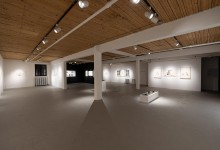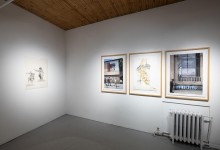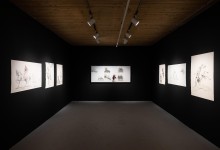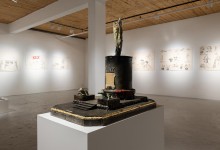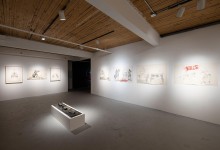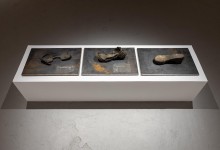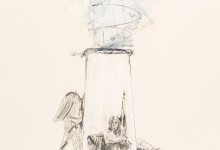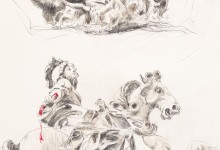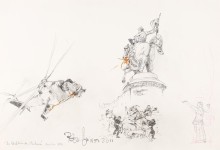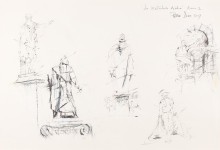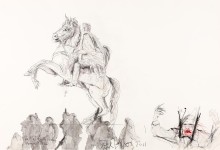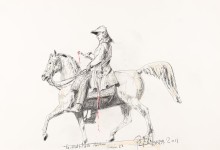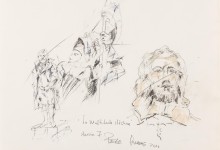Opening: Saturday, January 7, 2023 from 3:00 to 5:00 p.m.
Peter Gnass: La multitude déchue
Text by Peter Gnass
As they are still erected today, just as they were in the past all over the world, the statues systematically testify to this ideological domination of people in power over the population. One imagines the humble submission of a people to the will of an “all-powerful” entity, or any man in a vulnerable position, deprived of his right to speak and to think freely. Often the design of a monument is essentially charged with patriotic, nationalistic, or family values, and the concept has not really changed for the most recent statues.
Throughout time, all over the world, the imposition of statues in a city is not at all democratic. Most statues are not art in the strict sense of the word because they do not give free rein to their interpretation or to the imagination of the viewer. They are not open works. Rather dogmatic, they give off that old-fashioned power. They only convey a one-sided ideology, almost frontal and two-dimensional “cast in bronze”, to the test of the time and the bad weather. They are exceeded by time, by the evolution of the thought, the free movements of the thought.
These creations of “more contemporary” statues commissioned to professional craftsmen and sculptors by leaders, sponsors, business people or patrons, above all must meet the motivations, the intention, the “value” and the satisfaction of their client/s. So what can we say about the people who appreciate these statues?
First of all, they are the most radical supporters of old, “conservative” values and they mainly belong to the educated classes. The pleasure they feel in the presence of a monument comes not only from its antiquity, but above all from the feeling of satisfaction of being able to categorize a monument as having the attributes and characteristics of “quality” and “beauty” in the ancient, Gothic or Baroque style, etc. Historical knowledge thus also becomes a source of aesthetic pleasure conditioned by antiquity.
“This satisfaction is certainly not immediate, of an artistic nature, but scientific because it supposes a knowledge of the history of art.” (Aloïs Riegl) The modern cult of monuments.
If this statement is true, we are in front of a paradoxically elitist situation, where every passer-by or tourist would necessarily perceive the statues with a first degree vision where the aesthetic and personal appreciation does not count in favor of a superficial interpretation of this “thing”. This “thing” that every Western city must include in its inventory. This beautiful symbolic “thing” that shows the richness of a cultural heritage. Now, we are in the XXIst century and they are innumerable contemporary artists gifted, intuitive, enlightened and stimulating our imagination. Why then clutter our public spaces with these symbols that no one really identifies with, too ambiguous, and reflecting the politics of another era?


